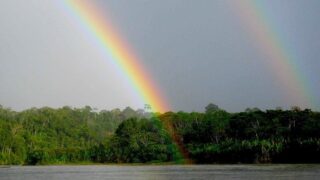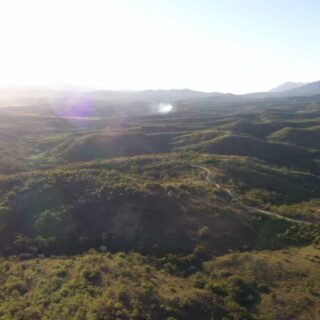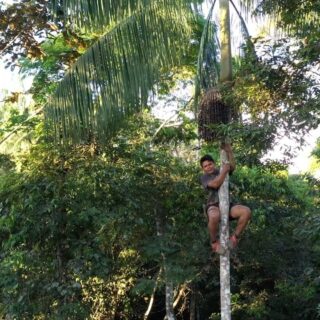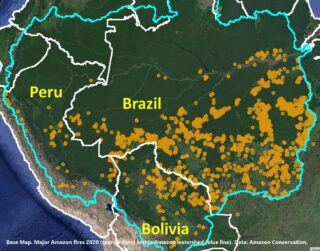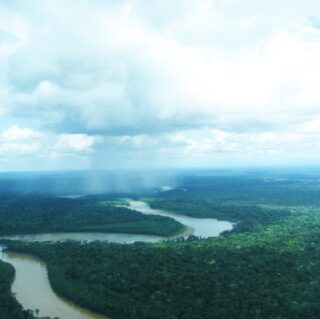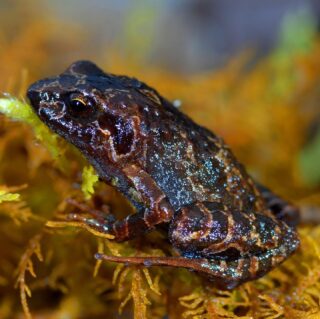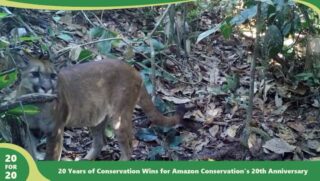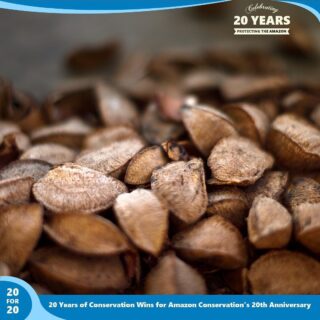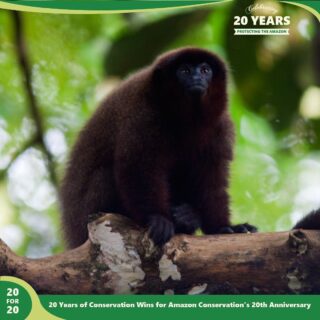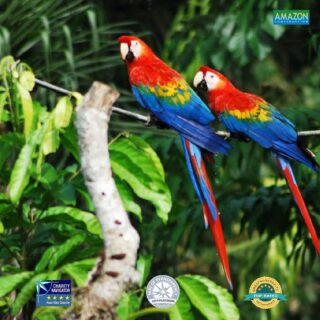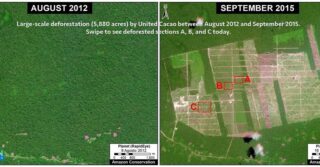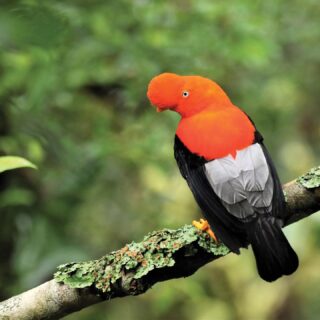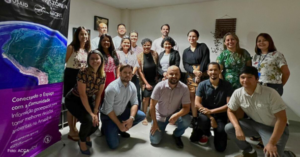
In the last two years, radar monitoring has proven to be an especially effective tool in the fight against illegal gold mining in the Amazon. While imaging satellites can be blocked by clouds or smoke, radar technology allows satellites to measure changes on the earth’s surface regardless of cloud cover. In 2021, our Peruvian sister organization Conservación Amazónica – ACCA, worked closely with SERVIR-Amazonia to develop and launch a specialized tool called RAMI (Radar Mining Monitoring Tool), which utilizes radar technology to discover illegal mining deforestation as soon as it happens. Since its launch, ACCA has successfully trained government officials, indigenous peoples, and other land defenders in the use of this technology, saving countless acres of forest by enhancing access to actionable information in an unprecedented way.
Now, ACCA is helping to expand the use of this crucial technology to the rest of the Amazon. Peruvian experts recently traveled to the Brazilian state of Pará to work with government employees of SEMAS (Brazil’s Secretary of the Environment and Sustainability) to implement a system for the application of RAMI in the Tapajós region. Sidney Novoa, the Director of GIS at Conservación Amazónica – ACCA (pictured below left), emphasized the similarities between Tapajós in Pará and Madre de Dios in Peru, an area where monitoring technology has been especially effective at mitigating deforestation. The intersection of national parks, indigenous lands, and conservation areas with land designated for mining yields a similar pattern of conflict and confusion regarding land use disputes. However, the similarity also indicates that our knowledge of the tools utility in Madre de Dios should transfer well to Tapajós.

Mauro O’ de Almeida, Secretary of SEMAS, highlighted that the Tapajós region was chosen for the operation of RAMI due to its high illegal gold mining activity. The Secretary hopes that this tool will address the problem of illegal mining in general, a major obstacle to environmental management in Pará, which harms the economy and natural resources.
In this way, the tool will reinforce SEMAS’ strategy for environmental oversight and monitoring, not only to combat illegal mining but also to supervise licensed companies and protect the environment and communities that depend on these natural resources. Additionally, this technology will be shared with other federal agencies in the state of Pará, such as the Chico Mendes Institute for Biodiversity Conservation and IBAMA (the Brazillian Institute of Environment and Renewable Resources), to strengthen the fight against illegal mining and ensure the sustainability of the Amazon.

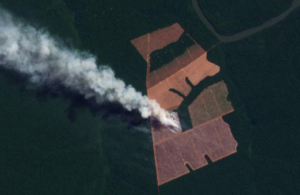

 Staying organized is the key to success – especially in today’s fast-paced world. That’s why Amazon Conservation now has its very own set of printable calendars! Whether you’re keeping track of your professional tasks or daily to-dos, we’ve got the right tools for you. Choose between our weekly or monthly template, designed to keep you on top of your schedule.
Staying organized is the key to success – especially in today’s fast-paced world. That’s why Amazon Conservation now has its very own set of printable calendars! Whether you’re keeping track of your professional tasks or daily to-dos, we’ve got the right tools for you. Choose between our weekly or monthly template, designed to keep you on top of your schedule.

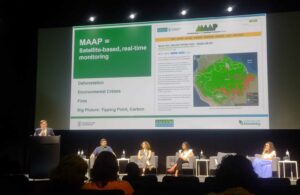
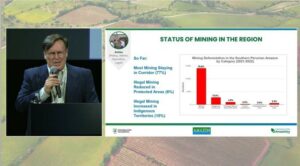


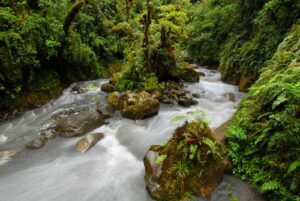 By incorporating just one or two of these methods into your summer plans, you are taking a huge step in contributing to the preservation of this invaluable ecosystem. Let us all be responsible stewards of the Amazon and work towards its long-term protection for future generations.
By incorporating just one or two of these methods into your summer plans, you are taking a huge step in contributing to the preservation of this invaluable ecosystem. Let us all be responsible stewards of the Amazon and work towards its long-term protection for future generations.

 Alejandro goes in-depth on the role of this lab in research practices: “The lab has four main goals: first, to train local researchers in otherwise inaccessible molecular tools. Second, to have an on-site facility for DNA, eDNA, and mercury analysis. Third, to contribute with genetic sequences of the species that inhabit the Andes to the lowlands of the Amazon in collaboration with the University of Guelph and the IBOL platform. Finally, to offer researchers the unique opportunity to study in real-time the pressures and threats that affect the state of health of organisms and their habitats in the Amazon, which would not be possible to understand in a short space of time with other methodologies.”
Alejandro goes in-depth on the role of this lab in research practices: “The lab has four main goals: first, to train local researchers in otherwise inaccessible molecular tools. Second, to have an on-site facility for DNA, eDNA, and mercury analysis. Third, to contribute with genetic sequences of the species that inhabit the Andes to the lowlands of the Amazon in collaboration with the University of Guelph and the IBOL platform. Finally, to offer researchers the unique opportunity to study in real-time the pressures and threats that affect the state of health of organisms and their habitats in the Amazon, which would not be possible to understand in a short space of time with other methodologies.”
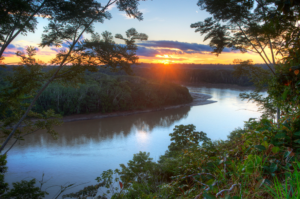 So consider becoming a Wild Keeper today to take a stand to help fight deforestation and climate change. Join other passionate conservationists in building a transformative force for positive change. Together, we have the power to create a real, lasting impact on the Amazon!
So consider becoming a Wild Keeper today to take a stand to help fight deforestation and climate change. Join other passionate conservationists in building a transformative force for positive change. Together, we have the power to create a real, lasting impact on the Amazon!